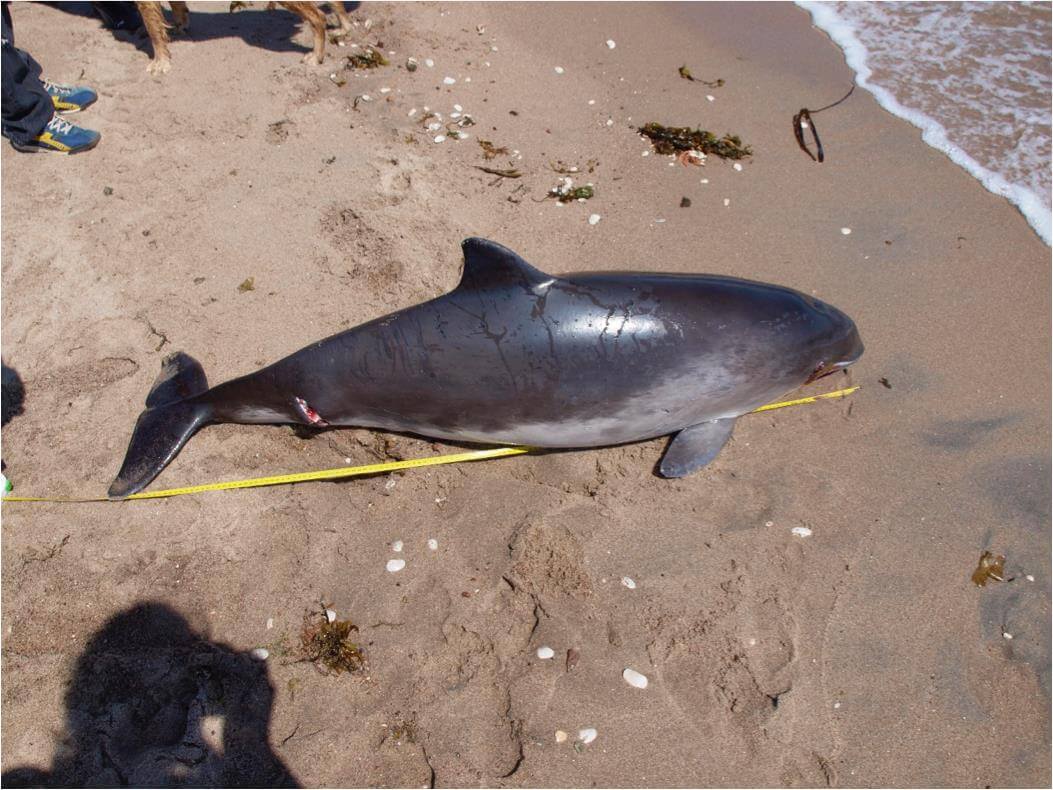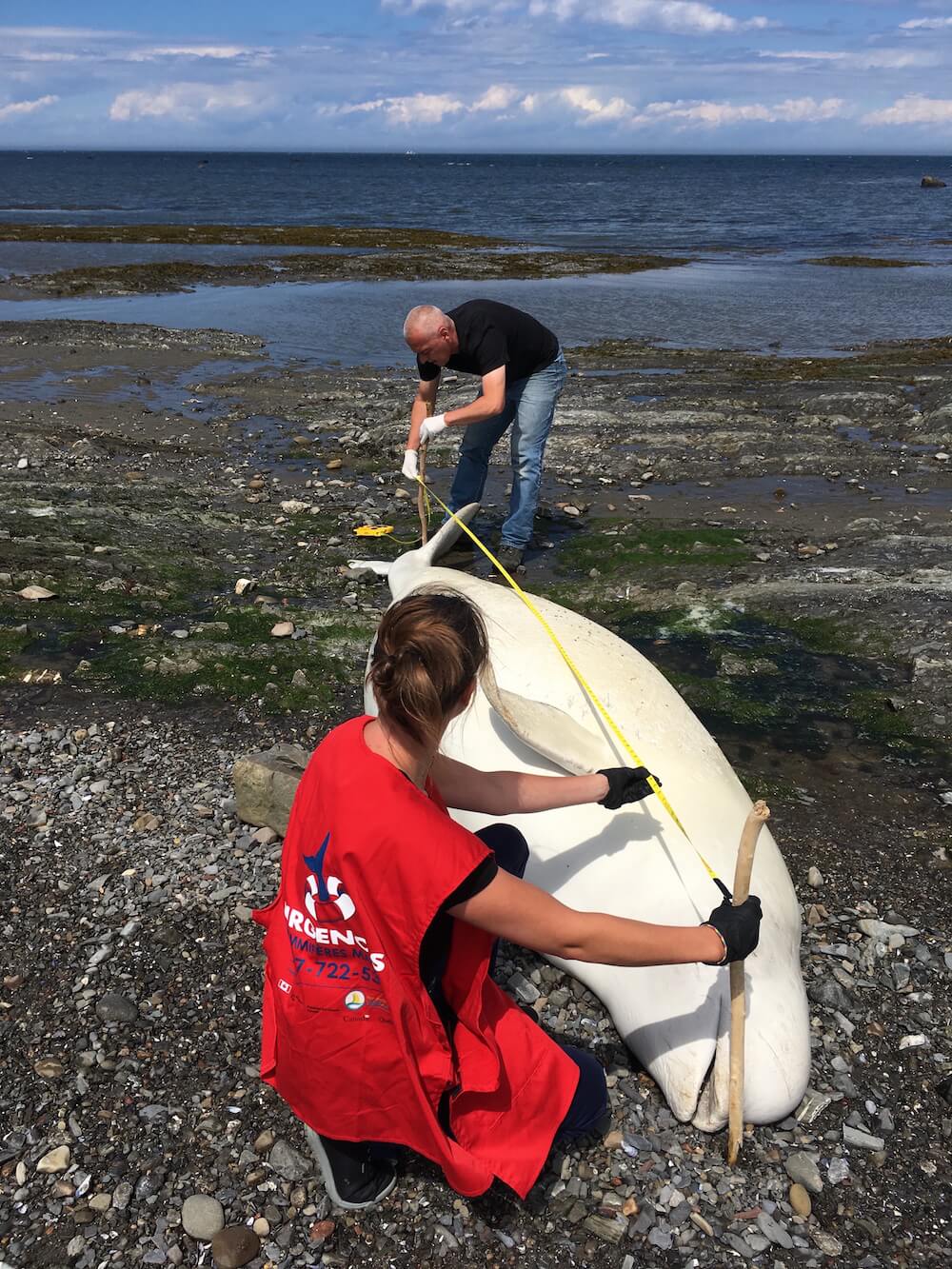By Stéphanie Tremblay
When we see a whale from shore, or even from a boat, it looks quite small. Even if it does not appear so big, a beluga can nevertheless measure up to 4.5 metres long! How can we go about calculating this length without touching the animal?
By photogrammetry! A seemingly complicated word for a technique that at first glance is rather simple. First, scientists simultaneously place two lasers (observable 100 metres away in daylight) on their camera. The important thing is that the beams are sharp enough to be visible. They must also be green (not red, as we are accustomed to), for the simple reason that the human eye sees green better.
With tools and a little dexterity, the photographer positions the lasers at a distance of 10 cm on a sort of L-shaped metal bracket. A bolt attached to the camera is used to change the vertical axis in order to take better aim. After a few adjustments, researchers are able to measure moving cetaceans.
By knowing the distance between the points created by the lasers and by relying on various reference points (blowhole, dorsal fin, peduncle, etc.), researchers can ascertain the total length of the specimen or a part of its body (such as its dorsal fin, for example), even if they see only a small fraction of the animal’s body.
Of course, this technique is much more complex than it seems. Researchers must then study all the data collected – in this case a multitude of photos – using mathematical equations. Then, following analysis, the length of the whale will be estimated.
For each species, experts have been able to determine an average length, notably on the basis of beached whales. Measurements are made by two rods (perpendicular to the body axis), which must be adjusted so that the tape measure passes from one rod to another. The Volunteer Reference Manual published by the Quebec Marine Mammal Emergency Response Network explains that “[t]he measurement is taken from the tip of the upper jaw to the notch of the tail. One must not follow the curve of the body, but rather take a straight-line measurement.”
Regardless of how the measurements are taken, whether on a live specimen via photogrammetry or on a stranded carcass using a tape measure, these methods help researchers estimate whale lengths, as well as to better understand their evolution. In fact, by comparing historical measurements and those taken more recently, scientists are seeing a gradual increase in size.
Recently, researchers have begun using drones to measure the girth and size of living specimens. Thanks to these tools, scientists might also have more information on whales’ growth and their state of health. From the air, they can measure the size of the whale and see whether or not it is feeding well, or if a female is pregnant.
Pour en savoir plus
- Quebec Marine Mammal Emergency Response Network (2017). Manuel de référence des bénévoles du Réseau québécois d’urgences pour les mammifères marins.






